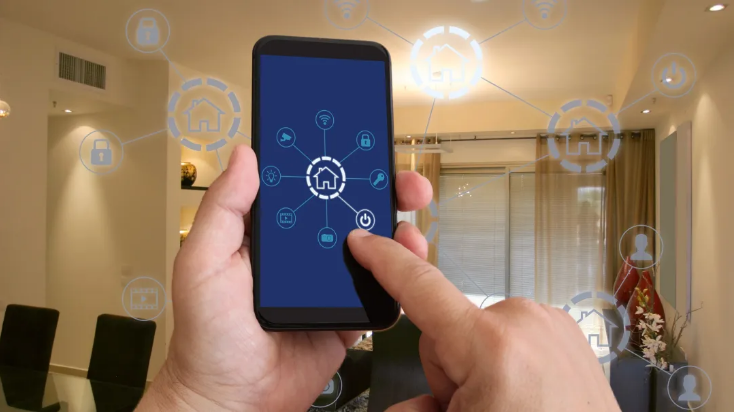2021-12-31
70 years ago, the American science fiction talent Bradbury described a future house in 2026 in the novel "Drizzle is Coming": the door has a voice lock, the fireplace is activated by temperature, the bed is automatically warmed at night, and three meals are produced by the machine. Production, unused furniture is automatically stored, music is played as you wish, and books are automatically read aloud. That may be the prototype of the Internet of Things.
 Title Map | Visual China
Title Map | Visual China
Looking at it now, the once wild imagination seems to be within reach. Smart products have entered the lives of ordinary people. However, the Internet of Things is still thunder and rain. 5G commercialization, AI technology development, rapid development of the Internet of Things, the "ammunition" needed by the Internet of Things It's ready, why hasn't the Internet of Things burst out yet?
The reason is that there is still a big gap between the smart devices we are exposed to at present to form a true Internet of Things form, specifically:
1. Ecological fragmentation
Manufacturers' awareness of smart homes still stays in control for the purpose of constantly seizing the entrance. There are too many considerations for commercial interests and too little consideration for user appeals, creating a centralized ecology of portals and establishing closed interests. According to data from the Global System for Mobile Communications Association (GSMA), the number of global IoT devices reached 12.6 billion last year, and it may be close to 25 billion by 2025. Almost an idea will give birth to a piece of hardware, and every piece of hardware must match an App. The result is that each App is broken from each other, and its own affairs.
2. The equipment is not deeply intelligent and cannot make independent decisions.
Devices rely on human control and cloud decision-making. The so-called "intelligence" simply transmits human intentions to the cloud server, and humans control the equipment. There are many things that people need to worry about. This is not the logic of smart homes at all. While pushing up user learning and use costs, it also turns a large number of devices into “executing machines” for people and the cloud.
In the true form of IoT devices, each device is the entrance to a specific scenario, and devices can be interconnected and each has decision-making capabilities.
Midea's self-developed IoT operating system based on OpenHarmony is evolving in this direction.
IOT OPERATING SYSTEM IS THE SOUL OF SMART HOME
Midea Internet of Things operating system is the first distributed Internet of Things operating system developed based on OpenHarmony 2.0 in the smart home industry. It is committed to providing brand-new issues such as multi-brand interconnection and interoperability of various products, independent collaboration between devices, cloud integration, and AI interaction empowerment. s solution.
The birth of this open source operating system means that no matter what brand of equipment it is, it can be interconnected, without a third-party entrance or intermediary, it is truly open and interconnected, and it provides users with richer value-added services and better services. The cross-scene experience is as follows:
Things are directly connected, and abilities are shared
The traditional intelligence is that people transfer information to the cloud through the entry device, and the cloud analyzes and processes the information before transferring the information to the device. The "communication" between devices also needs to pass through the "intermediary" of the cloud, which causes the linkage between devices to be delayed.
When the device is equipped with the same IoT operating system, it can realize the connection between things, and the device linkage speed is faster. At the same time, smart home appliances can carry lightweight edge computing tasks, reduce the load on the cloud platform, and improve the effect of device linkage.
This is the operating logic of Midea's operating system. Midea's Internet of Things operating system allows devices to independently establish connections through a soft bus (virtual communication channel between devices). At the same time, the operating system defines a common communication language between devices through the "end-to-side object model", so that all devices can "understand" each other and realize the ability to share between devices.
For example, the temperature and humidity can be detected through the thermometer and hygrometer in the living room, and the air conditioner and humidifier in the bedroom share the temperature and humidity data, and they are turned on in linkage to ensure a comfortable home environment. Each device takes advantage of its own advantages and realizes the ability to communicate without having to make up for shortcomings, and at the same time, it breaks the limitation of physical space.
In addition, the IoT operating system can also improve the stability of device collaboration. Even if the router is disconnected from the network, the devices can still coordinate and transmit information locally and autonomously. At the same time, home appliances and home appliances can realize automatic networking, one home appliance can be connected to another home appliance, reducing people's networking operations.